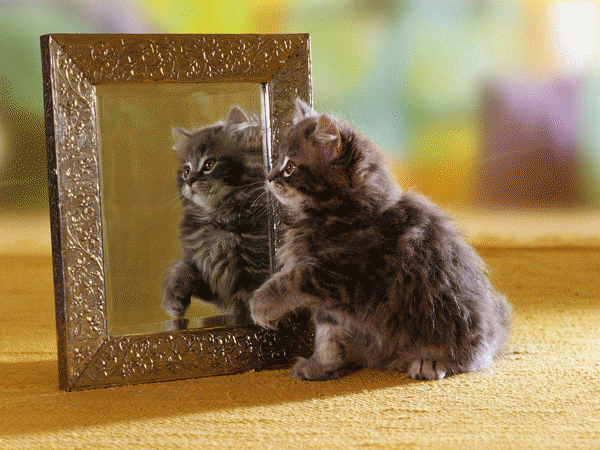 Reflection of an object in a plane mirror
Reflection of an object in a plane mirror
The reflection of light from a plane surface or from a spherical surface takes place according to two laws, which are known as the laws of reflection of light.
First Law: The incident ray, the reflected ray and the normal (drawn to the surface) at the point of incidence, all lie in the same plane.
Second Law: The angle of incidence is always equal to the angle of reflection. Angle of incidence is the angle made by the incident ray with the normal at the point of incidence. Angle of reflection is the angle made by the reflected ray with the normal at the point of incidence.
We use plane mirrors to show the image through reflection of light. If we use a block of glass, there would be reflection as well as refraction. This would distort the image and is undesirable. Also on all glass surfaces, there will always be less reflection and more refraction. More over for a certain thickness of glass there may not be any reflection at all. To avoid all these problems, plane mirrors are made out of thin glass plates to reflect the light and display the image. Most plane mirrors have a coating of silver to increase their reflection.